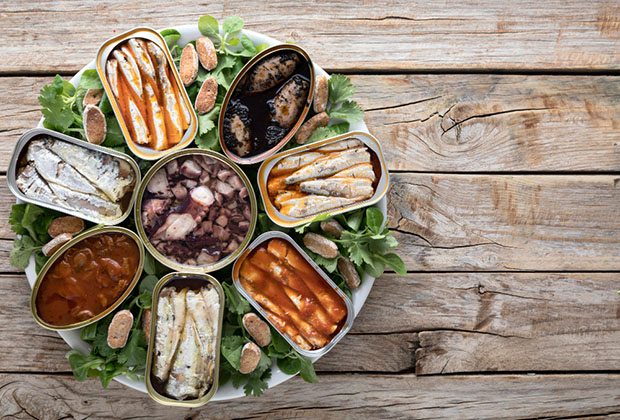
Sodium acid pyrophosphate (CAS #7758-16-9) is one of the most popular chemicals, especially as a food additive. Sodium acid pyrophosphate (SAPP), also known as disodium pyrophosphate, is a white, water-soluble solid with the chemical formula Na2H2P2O7, which has many applications in the food industry.
This substance is produced by partial neutralization of food phosphoric acid with sodium hydroxide or sodium carbonate to form monosodium phosphate, which is then dehydrated at 250°C to form sodium pyrophosphate acid.
Sodium pyrophosphate is commonly used as a leavening agent and is an important component of baking powder as well as flour itself. Yeasts add air and volume to the baked product structure by reacting with baking soda to produce carbon dioxide gas and also change dough characteristics by creating ionic bonds with starches and dough proteins.
Sodium acid pyrophosphate can be used as a leavening chemical to help bread rise. It is used in sausages to increase flavor and color. In French fries, this chemical reduces levels of a carcinogen called acrylamide, according to an article from the Center for Science in the Public Interest. It also prevents the discoloration of potatoes and sugar syrup and the formation of harmless struvite crystals in canned tuna.
It readily dissolves and forms the pyrophosphate anion, which then interacts with the proteins in a fully cooked mixture to create a moist texture. Also, sodium acid pyrophosphate acts as a buffering agent for pulp in the pH range of 7.3 to 7.5, which affects the color of the final product.
It can also be used in leather treatment. Sodium acid pyrophosphate is used in some dairy applications for cleaning purposes as well as in the oil production industry.

Other uses of sodium acid pyrophosphate include:
• Absorbent/chelating agent in processed potatoes
• Emulsifying agent in cheese and other dairy products
• Peptization agent in meat products
• Inhibiting agent in canned tuna
• Cooking accelerator in processed meat and poultry products
Main applications of sodium acid pyrophosphate
Generally, food grade SAPP is used as an acidic component in baking powder. It is used as a chelating agent or combined with other polyphosphates to separate magnesium and iron ions. Iron chelate is used during potato processing to prevent dark discoloration.
In baking, it is a slow leavening acid and may contain suitable aluminum and/or calcium salts to control the rate of reaction.
- Bakery
- Canned seafood
- Potato products
Bakery
Sodium acid pyrophosphate is used along with baking powder as a leavening agent to release carbon dioxide. It is also ideal for refrigerated doughs, cakes, cookies and pancake mixes where a slow reaction speed is desired.
It is often used with fast-acting leavening agents such as monocalcium phosphate in double-acting baking powder, or sometimes with another slow-acting leavening acid. Both SAPP and GDL have a slightly bitter taste.

Because sodium acid pyrophosphate is slow-acting and does not react quickly with baking soda, it is the most common leavening acid used for self-rising flour for home bakers. Any given amount of flour must contain enough leavening acid to neutralize the baking soda, but the combination of both cannot exceed 4.5 parts per 100 parts of flour.
The amount of yeast acid needed depends on its neutralizing value (NV), which is defined as the amount of baking soda needed to neutralize 100 parts of yeast acid. For sodium acid pyrophosphate, NV is equal to 70.
Since SAPP can have a slightly bitter taste, it is important to use enough baking soda in applications, as well as to use this yeast acid in combination with sugary items such as donuts and cakes.
Donut cake is an important application for sodium acid pyrophosphate, where primary gas production is necessary for flotation in the fryer system. Also, sodium pyrophosphate is useful for cakes, where initial gas production is essential for consistency and pan filling.
Canned Seafood
Struvite crystals are occasionally found in canned seafood, and sodium acid pyrophosphate is used to prevent its formation, such as in canned tuna.
Potato Products

Sodium acid pyrophosphate can be used to replace sulfur dioxide, sulfites and bisulfites to maintain the appearance and texture of baked potato products. The use of SAPP reduces post-cooking dark color in baked and processed potato products, such as oil-fried potatoes and potato salad.
It is iron in some cooking ingredients that produces a dark color in baked potatoes. SAPP stabilizes potato color and prevents the formation of iron complex dark pigment due to its strong sequestering properties.
Sodium pyrophosphate Price
To buy sodium pyrophosphate or to know the price of sodium pyrophosphate, contact the experts of the collection through our contact us page.
